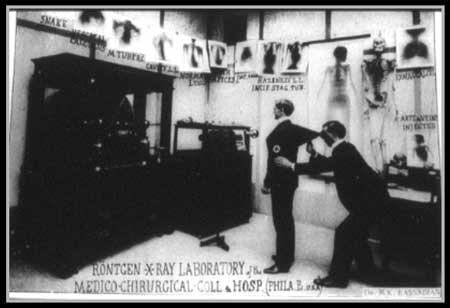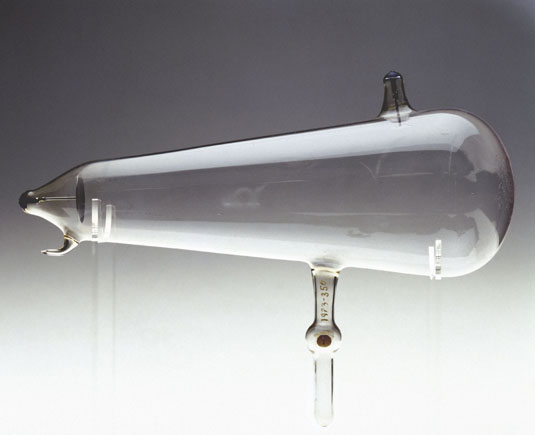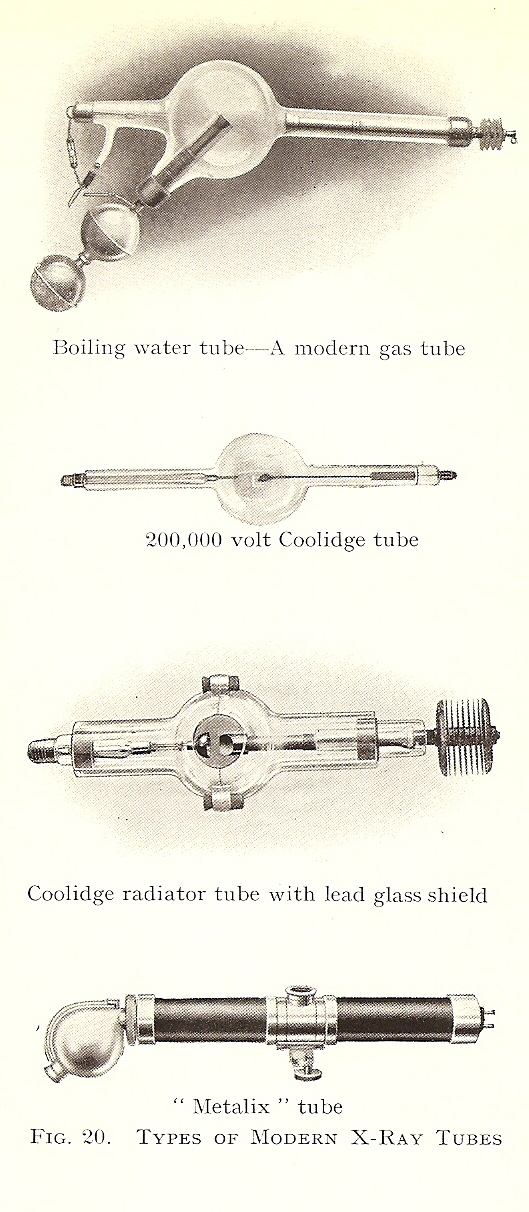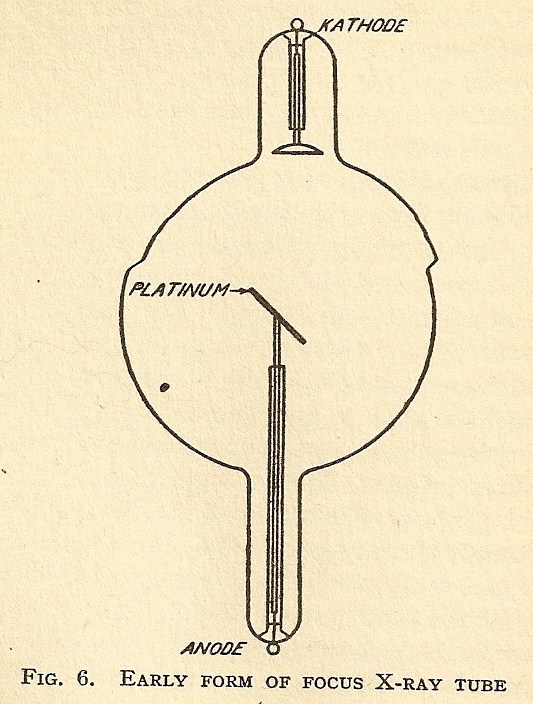How does it Work?
“X-rays are produced by letting a stream of fast electrons come to a sudden stop at a metal plate.” These X-rays have short wavelengths and are only able to penetrate a short distance through some matter. (Bellis) |
|
 |
| |
|
|
Early X-Ray Apparatus:
“In those days, an X-ray set usually consisted of two pieces of apparatus which are essential to the production of X-rays—a source of high voltage electricity to set the electron in motion, and a vacuum tube in which gas molecules have been so thinned down that the electron may have a chance to accelerate to a really high velocity by electric force before experiencing that sudden stoppage which is the birth of the X-ray” (Pullin, 126). |
|
 |
| |
|
|
The early X-ray consisted of 3 important parts:
-
Induction coils
-
Purpose: To create the large voltage required to produce the x-ray.
-
consisted of a primary coil of “stout wire” wound around a soft iron core; this primary coil was then surrounded by a secondary coil of “vastly greater number of turns of very fine wire” (Pullin, 128).
-
Interrupter
Purpose: to interrupt the current, because the magnetic field is only produced in the secondary coil when the current in the primary current is changing. And “[t]he more rapid the change the greater is the voltage produced in the secondary”(Pullin, 130).
-
Regulator
Purpose: to control the electric discharge through the vacuum.
-
Examples of Regulators:
-
Bauer Valve regulator (Tube with Bauer Regulator (ca. 1912-1915)).
-
Self-regulating tube (Queen Self-Regulating Tube)
|
|
 |
| |
|
|
“While experimenting with cathode rays by passing an electric current through a glass vacuum tube covered with black paper, he noticed an unexpected green glow on a little screen covered with phosphorescent paint lying on his bench. He quickly realized that some mysterious invisible rays were leaving the tube, going through the black paper, and causing the screen to become luminous. These unknown, or "x" rays were shown to pass easily through wood, cloth, and paper, but not denser material” (NMAH) |
|
 |
| |
|
Later X-ray:
The interrupter is replaced by a by an alternator and the induction coil is replaced by a transformer. |
|



